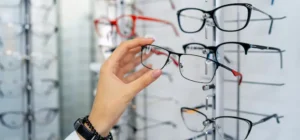What if we could restore sight to millions using a material thinner than a human hair?
The intersection of nanotechnology and medicine has birthed remarkable breakthroughs in treating eye diseases. At the forefront of this revolution stands Carbon Nanotubes, microscopic tubes of carbon atoms that promise to transform how we approach eye disease treatment.
The Science Behind Carbon Nanotubes
Carbon Nanotubes are cylindrical molecules made entirely of carbon atoms. Their unique structure gives them extraordinary properties. These tubes measure just nanometers in diameter but can be several millimeters in length. Their remarkable strength, flexibility, and electrical conductivity make them ideal for medical applications.
Physical Properties and Benefits
The extraordinary characteristics of Carbon Nanotubes make them perfect for eye disease treatment. Their small size allows them to interact with individual cells. Their strength ensures stability in biological systems. Their electrical conductivity enables them to stimulate nerve cells effectively.
Revolutionary Applications in Eye Disease Treatment
Retinal Repair and Regeneration
Carbon Nanotube scaffolds support retinal cell growth and regeneration. These scaffolds provide a framework for new cells to grow and integrate with existing tissue. This breakthrough offers hope for patients with age-related macular degeneration and retinitis pigmentosa.
Drug Delivery Systems
The hollow structure of Carbon Nanotubes creates perfect channels for drug delivery. These tubes can carry medication directly to affected areas of the eye. This targeted approach reduces side effects and increases treatment effectiveness.
Neural Interface Development
Scientists have developed neural interfaces using Carbon Nanotubes to restore vision. These interfaces connect damaged parts of the eye to functioning neural pathways. This technology helps patients with severe retinal damage regain partial sight.
Current Research and Clinical Trials
Promising Studies
Recent clinical trials show encouraging results in using nanotube-based treatments. Researchers have successfully restored partial vision in animal models. Human trials are now beginning in several countries.
Safety Considerations
Scientists carefully evaluate the safety of Carbon Nanotube treatments. Current research focuses on long-term effects and potential risks. Initial studies show promising safety profiles when properly engineered.
Here you like Photodynamic Nanoparticles for Retinal Treatment
Future Prospects
Emerging Technologies
New applications continue to emerge as research advances. Scientists explore combining nanotubes with stem cell therapy. This combination could lead to complete vision restoration in some cases.
Challenges and Solutions
While promising, some hurdles remain. Researchers work to improve biocompatibility and develop better delivery methods. Solutions to these challenges emerge regularly through ongoing research.
Conclusion
Carbon Nanotubes represent a quantum leap in treating eye diseases. Their unique properties and versatile applications offer hope to millions affected by vision problems. As research continues, we can expect even more breakthrough treatments in the coming years.
Frequently Asked Questions
Q1: What makes Carbon Nanotubes suitable for eye disease treatment?
Carbon Nanotubes possess unique properties including biocompatibility, electrical conductivity, and precise size control. These characteristics allow them to interact effectively with eye tissue and deliver targeted treatments.
Q2: Are Carbon Nanotube treatments safe for human eyes?
Current research indicates good safety profiles when properly engineered. However, extensive clinical trials continue to evaluate long-term effects and optimize safety protocols.
Q3: What types of eye diseases can be treated using Carbon Nanotubes?
Carbon Nanotube treatments show promise for various conditions including retinal degeneration, glaucoma, and certain forms of blindness caused by nerve damage.
Q4: How soon will these treatments be available to patients?
While some treatments are in clinical trials, widespread availability may take several years. The timeline depends on regulatory approval and successful completion of safety studies.
Q5: What advantages do Carbon Nanotube treatments offer over traditional methods?
These treatments offer more precise targeting, better drug delivery, and potential for tissue regeneration. They can reach areas of the eye that traditional treatments cannot access.




